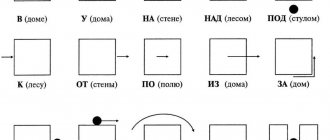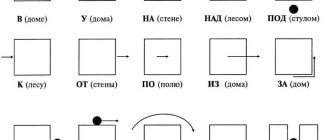Remember the old cartoon about Nobody? The lazy boy found himself in the land of the great Unwanted, where most of the actions were performed by robots. It must be said that the animators painted a bleak picture of automation: a person inside robotic processes disintegrates as a person and loses his social adaptation skills. This clearly goes against our beloved “Electronic”, which preaches the value of combining automation and the human element. Something brought us into philosophy. But modern business thinks of automation either as a necessity, or as an unjustified waste, or as the only magic pill for all problems, and in general treats it with suspicion. But in vain. If so, let’s begin educational program on this topic.
The first rule of automation should be stated before the cata: it should not be redundant, inappropriate, overloaded and disproportionately expensive in relation to the company’s turnover and product
There is no definition of automation?
If you try to find a definition of business automation on the Internet, you will come across different options related to control, robotization, artificial intelligence, etc.
None of them will be comprehensive or accurate. Let's try to give a definition here on Habré. Let it be like this for a start. Business automation is a set of working tools (programs and devices) that minimize routine, optimize labor and production resources in order to increase the productivity and efficiency of all business processes. Sounds good. However, how can automation be a set of tools? It's a process. Yeah, for example, automation is the implementation of programs and installation of devices... Stop. Is there life after implementation? Of course, exploitation. Ok, let's come to a new definition: Business automation is the process of implementing and operating a set of working tools (programs and devices) that minimize routine, optimize labor and production resources in order to increase the productivity and efficiency of all business processes. No matter what, it can be taken as working, but questions still remain: what if there are no formalized business processes, and what if there is no production resource, etc.
But if you turn to the sources, all articles about business automation immediately come down to automating business processes. Wikipedia defines them precisely and succinctly: “ A business process is a set of interrelated activities or work aimed at creating a specific product or service for consumers. The management concept of BPM considers business processes as important resources of the enterprise, and assumes their management as one of the key organizational systems.” Well, automation is precisely the process of implementing and operating software to optimize and speed up business processes. It's simple.
In theory, in an ideal world, business automation and business process automation are equivalent concepts, because in business everything is a process that can be discretized, decomposed into subprocesses and stages, and described. But in the real world, companies have a lot of activities that do not fall under the definition of a business process, the processes themselves are unoptimized or absent altogether, and all work is carried out spontaneously. Therefore, automation tasks suddenly include a huge preparatory stage, in the code of which it is necessary to analyze, describe and prepare business processes.
We made a decision: for everyone who came from Habr and left a request in the form, a free
analysis of the company’s business processes will always be available. This is the work of our experts, related to the analysis of your business with the subsequent development of recommendations and usually it costs from 15,000 rubles, but for the science of the tail we don’t mind Habr, we don’t mind anything. Sign up, we will contact you, set up a time (it will take less than 15 minutes) and discuss your company’s business processes or problems with business processes. Communication with an expert does not impose any obligations on you.
Key areas and software
It is important to understand that you need to approach the task comprehensively and focus not on the structure of the company, but on the processes taking place in it. This approach will make the business more flexible, reduce reaction time to sudden difficulties and speed up the creation of the final product. Everything that happens within an organization is individual. But the main divisions are always similar.
Control
- budget control;
- security of information and economy;
- management;
- legal support.
Here you can use "1C".
Marketing and Sales
Optimization of relationships with clients, advertising. They use Megaplan, Bitrix, EFSOL.
Production
They take inventory and supplies and control over equipment to a new level. Logistics are also being optimized. Suitable programs include Craft and USU.
Quality
Control of everything that the company produces, dealing with questions and dissatisfaction from customers. Suitable: “Indicator Administrator”, “FINEX” and “Master”.
Staff
Selection of employees, their accounting, training and incentives. Programs: “1C”, “Pharaoh”, “Boss Personnel Officer”.
Finance
All standard processes of any company - accounting, taxes, planning, reporting, payroll. Software: “1C”, “Fingrand”, “AuditExpert”.
Organization of enterprise work
This includes the entire turnover of registered documentation. Software: "1C", "Master Doc".
What business needs to be automated?
Any.
And if we expand a little, then competent and timely automation improves the situation in any company: from Gazprom to a flower shop. Companies have different metrics and business processes, but there is a group of automation goals that are universal for most organizations.
- Saving is one of the key goals of automation. Once companies invest in software, they use it to either increase productivity or reduce costs. Thus, the company at least saves time and money on changing the structure of transactions and sales, while increasing turnover and profits. For automation to turn out to be frankly unprofitable, you just need to abandon the purchased program and forget about the money spent.
- Streamlining and speeding up business processes is a key task of automation. Reducing the time for each operation, defining clear stages, responsibilities and deadlines makes the process efficient, transparent and streamlined. A clear distribution of tasks between employees minimizes the human factor and reduces the risks associated with it.
- Increasing the transparency of business as a whole is an important goal. Automation helps employees work with clients and each other in a unified information system and not conflict with clients and follow individual KPIs; clients - to receive timely and high-quality service; the manager can see the real results of the employees’ work. Such transparency not only shapes the company’s positioning, but also leads to revenue growth due to the elimination of conflicts and customer loyalty, as well as the standardization of processes (a standard, fixed business process is a sign of a reliable company).
Examples and ideas
Using this procedure, it is possible to maintain a constantly updated connection between all departments of one enterprise. In addition, you can establish its interaction with information services and make it more flexible.
Thus, it becomes possible to free up human and financial resources, labor productivity increases, and the development strategy operates more effectively.
Most companies do not follow a clear sequence of actions. As a result, managers are constantly busy, no one knows when the project will be completed and at what stage it is today, many tasks and checking employees are duplicated. It turns out that everyone is busy, and the process is extremely slow.
But we need to act differently. One manager should have as many projects in his daily planner as he can realistically complete. His goal is to control them, monitor execution, and report on the results. If you spend more on it, then all or some of them will be made worse or slower. But in many organizations, several people check the same task at once.
All employees who interact in any way with each other or with production participate in business processes. Therefore, optimization often begins with personnel.
Sometimes the procedure helps to organize even simple but time-consuming tasks:
- calculation of discounts;
- maintaining statistics;
- processing received orders;
- systematization of any data.
There are many successful examples of its use. If you implement orders for materials or products for sale, there will be no downtime and no overloading of warehouses with the same type of product.
What can be automated in business?
It’s definitely impossible to automate everything, since there are such things as communication, human thinking, communication with clients, etc.
There are a number of activities that are excluded from the processes and can only use some programs, but not be fully automated, for example, corporate culture, personnel selection, personnel management, and company management as a whole. These activities differ from business processes by a high level of sociality, involving a person not only as an employee, but also as an individual. But the rest of the processes can be completely automated. As we have already mentioned, there are three main groups of business processes.
Process group | Type and features of automation |
| Managers are business processes that are included in the strategic management and management of the organization. | CRM, ERP, project management systems, analytical systems. The manager's workplace requires full access to company data, advanced analytics, and the ability to delegate and redistribute tasks. |
| Operational processes are a set of processes that make up the main activities of the company. This is exactly what we do at work: production, development, marketing, sales, support, etc. | CRM, ERP, project management systems, ECM, WMS, CAD, CAD and other specialized systems. They must be either universal (all departments in one information system) or integrated with each other. |
| Supporting processes are processes that solve the internal problems of the organization: system administration, ITSM, accounting, logistics, etc. | Specialized software that can be integrated with the previous group or work independently (1C, ticket systems, logistics routing systems, M2M, etc.) |
| The mentioned activities have a high human factor. | Programs for personnel management and selection, corporate portals, chats, instant messengers, etc. Those programs that make work easier, gamify processes, unify communication, but do not exclude the human factor in those processes where it is decisive. |
Main advantages
Why do we need automation of business process management? The main point here is to establish efficient work, maximum output and profit. The goal here is not to replace or redistribute employees performing similar operations with robots. Thanks to optimization, these workers will get rid of the daily routine of small reports and repetitive actions that only take up working time and prevent them from moving on to more meaningful, interesting or research tasks.
People coordinate joint activities better because they work together and through the same programs. Coherence will be higher this way, and the result will be more accurate. More organizations large and small are now adopting automation for these reasons. Main advantages:
- employee actions will be more coordinated;
- the number of errors due to the human factor will be reduced;
- manual routine work will be replaced by mechanics or automatic equipment and the reproduction of cycles will speed up;
- from the inside, the enterprise will become more transparent and technologically advanced;
- the quality of tasks performed will increase;
- It will be easier to make decisions for standard situations;
- large volumes will become easier to process.
What does automation give to business?
In any business, a lot of data is now collected and it opens up interesting prospects for working with clients: you can make upsells, segment, plan promotions, change the assortment, etc. Moreover, any decision made on a whim, without analyzing qualitative and quantitative indicators, will most likely result in failure. Collecting data manually, in Excel or Access, is hard and thankless work, since such information is easy to lose or damage, and it is usually poorly organized. Automation helps collect data in databases, and the DBMS reliably stores the data and allows you to interpret it and build complex slices. In addition, storing information in a database is incomparably safer: access rights, backup, and hardware protection allow all commercial and production information to be stored as securely as possible.
This is generally about all Russian business.
Only the majority are still at the stage of denial. Automation streamlines, improves operational work and task management. All employees (and it doesn’t matter at all whether remote or office) work in a single information space of the automated control system (PM, ERP, CRM...), coordinate their actions, receive and delegate tasks, see their tasks within projects and business processes, distribute their workload across time. The manager no longer needs to call everyone to his place and chew over tasks - it’s enough to put them in the system and monitor their implementation. All operational work is carried out in a single system and any employee can access data within their competencies, as well as request access or download data, if necessary. Outside of automation, all this is continuous spontaneous communication, in which it is easy to forget, make a mistake, or simply “imperceptibly” fail to complete a task.
The human factor is perhaps the very first thing that automation in a company struggles with. Here is an approximate minimum of corporate problems that small and medium-sized businesses face: missed opportunities for contact with clients, forgotten and not recorded data, elementary tasks stretched out over time, office and remote procrastination, work “to the left” according to the profile of private clients of managers, theft of commercial information and so on. When software for automating business processes at all levels (managerial, operational, support) appears in the hands, or rather on business servers, most of these problems can be easily and relatively painlessly solved.
Security is an important function of business automation. Thanks to its architecture and software functions, automated control systems protect your data from unauthorized access, allow you to control the financial condition of your clients, and log actions in the system. Alas, there is no absolute protection - however, the presence of automation significantly reduces the risks associated with information security - in some companies to almost zero (especially in small businesses).
Despite the fact that automation of business and especially business processes is a good “fad” of the RegionSoft team (we even added a powerful process automation module in our CRM with a setup wizard and a visual designer, and we also conduct a free basic audit of business processes upon requests from this link), we do not undertake to claim that automation is the cure for all business ills and that same magic button “Make a difference.”
First of all, you need to choose the right processes to automate:
- large processes - branching, complex, affecting several employees;
- recurring with any period (launch of promotions, shipments, standard sales, etc.);
- influencing all other processes and activities in the organization (training new employees, releasing a product release);
- demanding deadlines (launch of promotions and promotions, customer support, some internal infrastructure management processes, etc.);
- routine processes - those that take a lot of time, are often repeated and do not require particularly intelligent actions (purchases, shipments, creating packages of documents, etc.)
Automation has some disadvantages. In addition to high labor costs and a difficult start, automation leads to a loss of process flexibility. Since an automated business process is based on a machine, on an algorithm, it becomes formalized and standard. There are times when you have to move away from this standardization and solve an independent problem (difficult client, exclusive delivery, complex human factor, unplanned risks). However, this is an exception; in general, formalization is for the benefit of the company.
Software price and how much implementation costs
This depends on various factors:
- what problems should be solved;
- type – built-in/standard;
- how many and what resources are needed to launch;
- volume of connected jobs.
To understand the issue a little, you can watch suitable videos. But it’s better to seek help from a person who understands even the smallest things. This way you can save time and choose the software that will really help you improve your productivity and take it to a new level.
How to measure the effectiveness of automation?
Measuring the ROI of business automation is difficult and each company may have its own qualitative indicators and quantitative metrics.
It is better to plan targets in advance to understand the speed of change. Speaking purely from experts, for companies without the risk of bankruptcy and other financial problems, it is customary to consider the payback period of automation systems as follows: optimistic scenario - 1 year, realistic scenario - 2 years, pessimistic - from 3 years. However, this is a very average indicator, since companies have different turnover, different automation goals, and different costs of the software itself. Therefore, it is better to think about the indicators and results of implementing an automation system in advance.
What can become an indicator of the effectiveness of implementing an automation system in small and medium-sized businesses:
- time spent on an operation or process - if it has been reduced as a result of automation, then everything has been done correctly;
- deal length: this may not change, but a shorter deal cycle and sales cycle is obviously a good sign;
- KPI metrics are an excellent tool for measuring the effectiveness of automation: by comparing employee performance over time, you can see how they have changed and judge the results based on the vector of changes or take measures to adjust the work of employees in the automated control system (for example, in CRM);
- the number of complaints or requests to the support service - after the implementation of automation, the flow of complaints should be reduced due to the fact that managers will not make some mistakes in working with clients (such as missed contacts, forgotten letters and documents, missed calls, etc.).
You can also calculate the usual indicators, such as the cost of automation in relation to the company’s turnover, revenue, and net profit.
These indicators can be compared over a period, or can be used to assess how high the potential costs are before implementation - if the value is too high, it is better to check again whether there is a more suitable vendor (this usually happens when a small company chooses some very an expensive system, believing that what is expensive cannot be bad; it may not be bad, but unsuitable - completely). One of the working methods is to evaluate the cost of the business process or the labor costs of each employee. Let's look at an example.
Let's take a simplified, abstract business process - selling flash drives to a corporate client in an advertising agency.
The scheme is as follows: the client asked to produce flash drives with application - the manager takes on the job - first call - meeting and discussion of design and volume - approval - preparation of the proposal - approval from the client - preparation of the contract - (parallel process of checking the availability of the required volume of products in the warehouse and additional order or re-coordination of product design) - prepayment - launch into production - sample shipment - approval - batch production - shipment and closing documents - end of the transaction - sending an offer to the client for a souvenir for the New Year (...) The process is closed. This is a fairly simple, linear business process. Manager Vasya spends about 8 working days on this entire chain, but not entirely, but on average 2 hours a day (the meeting is longer, the call is shorter, etc.). In total, Vasya spent 16 hours on this client. Of these, the longest stages are: meeting (nothing can be done, we don’t take it into account), counting goods in the warehouse and communicating with the logistician (2 hours), preparation of the proposal (1 hour), preparation of the contract (2 hours), preparation of closing documents (1 hour ). Total 6 hours of operational work with documents and warehouse. An hour of Vasya’s work costs the employer 400 rubles (net Vasya + taxes and social insurance), that is, this work costs 2,400 rubles. Not very much, considering that the order will be large. Let our Vasya not do anything else in the company, he only sells flash drives with the application to companies, which means that he can serve 10 clients in a month. That is, Vasya’s operational work will cost 24,000, per year - 264,000 (he is on vacation for 1 month).Now let’s imagine that the company has a CRM that displays warehouse balances in real time, includes CP and contract templates, and has printed forms for all closing documentation. Vasya does not need to retype and copy-paste names, calculate prices and costs, look for discounts, enter details, look for a logistician and sort through types of flash drives by box - he sees all this in the CRM and fills out documents in 10-20 clicks, choosing the exact names, discount conditions, services, etc., sending all this from mail to the CRM to the client. At the lowest skill, he will spend 1 hour, that is, 6 times less. And his operational fuss will cost the company 44,000 a year? No, more - because Vasya will be able to serve many more clients. That is, the overhead costs per transaction will be reduced, and the number of transactions will increase. On the scale of even a small advertising agency, this is absolutely normal.
Let’s simulate: the market is competitive, not limitless, and Vasya was able to serve an average of 15 clients per month.
Under the old scheme, the company would have paid 396,000 rubles for his routine (11 months * 15 clients * 2,400 rubles). According to the new scheme with CRM - 66,000 rubles. At the same time, 1 CRM license for Vasya cost approximately 16,000 rubles forever, without rent (let’s imagine that the company bought 10 RegionSoft CRM Professional Plus ). That is, purely saving on part of the process (a small part!) already pays for the employee’s license. But the “expensive” logistician, warehouse, etc. are also automated. That is, the cost of a business process becomes lower due to automation. And you and I have not yet calculated the increase in income due to the arriving clients, for whom Vasya began to have enough time.
Now let’s return to the issue of the economic effect of introducing an automation system. You can carry out calculations for each stage of all processes in the company and each employee involved - in the end you will get an approximate effect. Just don’t forget that to estimate the cost of owning a system, you will need to calculate the integral indicator of the total cost of ownership (Total Cost of Ownership, TCO), which includes the costs associated with the acquisition, implementation and operation of the automated control system;
and the “cost” of an employee and an hour of his work should be calculated not by net wages, but by payroll, social costs, indirect costs (office equipment, office maintenance, Internet, etc.) Do not forget that TCO for cloud systems must be multiplied by the number of months used and it will constantly grow due to periodic payments, and for desktop systems TCO often consists of a one-time payment for licenses (or installments), the cost of modifications, support and updates. Sometimes it is more profitable for a company to have a TCO, albeit larger, but distributed over time - for such companies, for example, we offer rental for the desktop RegionSoft CRM with the option of purchasing the software after 7 months of rental and a bunch of other bonuses.
By the way, about CRM.
Business automation tools
An automation system is everything that transforms part of manual labor into machine, automatic, and transfers it into the sphere of engineering and information technologies.
In principle, business automation tools (which includes everything from tenders to the production process) include all means: machines, equipment, robotics, software, communication channels, networks, etc. This is a huge layer of knowledge that applies to each specific organization. But in the context of automating business processes, as a rule, we consider software + related hardware (servers, VDS, barcoders, cash registers, electronic price tags, terminals, cards, access control systems, etc.) We will also be within the framework of Habr and our competencies talk about programs that allow a business to automate most of its operational work.
How to choose an automation tool?
There are two main ways to choose a business automation system.
- Purchase a ready-made solution from a vendor (developer) and carry out professional implementation. Ultimately, it's faster, cheaper and easier: there are so many solutions on the market that you can find anything from car service automation systems, training course and beauty salon automation systems to large factory automation solutions. You will benefit in terms of timing, accuracy of implementation, correctness of training and will be able to quickly start working in a new area.
- Develop the system yourself and implement it yourself. As of 2021, this is, of course, the way of the samurai and it is not a fact that there will be no hara-kiri in the end. A long, complex process with the selection of a stack of technologies and performers, protracted deadlines, outright “kids” from hired developers, etc. It is difficult to think of an area where this option would be suitable. Unless you fork some open source, make a custom industry version and decide to become an IT company implementing this software. This is where it goes. And spending time on your own development, when there is everything around, is very similar to the need to assemble a car with your own hands from a Saratov refrigerator and a Ferrari engine - it’s fun, cool, but insanely expensive and problematic to operate.
Of course, the implementation of automation systems carries risks: for example, you can start improvements and go over budget, face a boycott of employees, difficulties in training, problems when refactoring business processes. But these are the implementation problems that any experienced vendor is ready for, which means you just need to get started.
CRM as a special case of business automation
A CRM system is one of the most popular automation tools for small and medium-sized businesses.
And if previously a CRM system automated only the sales department and a little bit of marketing, now most modern solutions on the market are universal business combines. For example, our edition of RegionSoft CRM Enterprise Plus is already actually a full-fledged ERP and can, in one program: automate sales, project management, tasks, KPIs, work with primary documents, includes mail, telephony, multi-currency accounting, logistics, warehouse accounting, cash accounting , multi-process production, calculation mechanism, has more than 100 standard reports, various designers and, of course, a mechanism for automating business processes. And besides this, every 2-3 years major releases are released that add the most popular features to existing ones. This whole story is called end-to-end automation - the safest and most convenient way of automation, when almost the entire company can work in the same information environment. A CRM system today is a basic element of automation, understandable and urgently needed, especially during a crisis, especially for a distributed team. What can I say - always necessary!
However, when choosing a CRM, like any other automation tool, you need to remember three main rules:
- automation should not be excessive, inappropriate, overloaded and disproportionately expensive in relation to the company’s turnover and product;
- automation must take into account the requirements of a specific business and comply with them as much as possible;
- automation must work and be effective.
According to various expert estimates, the level of automation of Russian companies is somewhere from 10 to 15%. This is very little. Yes, and with our own eyes we can see how, for example, Perekrestok delivery arrives at terminals, check machines, everything is debugged and works like clockwork, and a restaurant in the city center only recently stopped issuing handwritten checks, the reservation is still written on a chalk board; how small IT companies invest in automating everything and everyone in order to be ahead, and serious trading companies manually fill out invoices and acts... These imbalances are due to national characteristics, and distrust of technology, and worries about oneself in the space of the domestic economy. But the fact remains: with an automated business, life is much better, safer and more sustainable. Everything else is flimsy excuses.
We have a promotion “Autumn is coming into its own”
- you can buy RegionSoft CRM on very good conditions:
- For those who buy immediately (100% prepayment) - a discount of 15% from the standard price list is provided.
- For those who buy in installments - interest-free installments for 3 equal payments, 1 payment per month, subject to the total cost of licenses from 38,000 rubles.
- Subscription instead of purchase - a 30% discount is provided when paying for a 3-month subscription. The minimum subscription cost is 3,400 rubles per month (excluding discounts).
We also work great remotely: install, implement, train, support. Call or leave a request - the online demonstration is free, detailed and interesting.
Cartoon about Not Wanting, if you happen to be neither old nor boomer:








